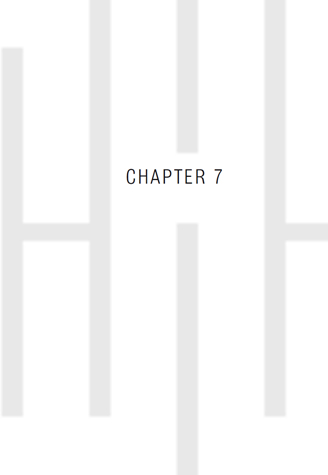
EXPERTISE

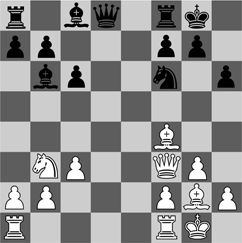
Play along, now: you’re white and it’s your move. What do you do? Well, if you thought to slide over your corner rook to threaten the black queen, congratulations—consider yourself a chess expert! But in this case, the expert move is not the best move. Here’s what happens: black ignores your rook’s threat and instead moves bishop to threaten your queen. You stay on target, stay on target and capture the black queen. And feisty black retaliates by squishing your attacking rook with a black rook of its own. You still have no way to save your white queen. So by playing the obvious, expert move, you lose your white rook and queen, while black loses only its queen.
Expertise is great, except when it’s not. Here’s the trap: when presented with a familiar situation, experts may act according to the kneejerk of their experience while overlooking unfamiliar best solutions.
To learn more about expertise in general and this trap in particular, I spoke with Paul Feltovich, research scientist at Florida’s Institute for Human and Machine Cognition and renowned expert on expertise. “In any kind of cognitive activity you have two kinds of things going on,” Feltovich says. “You have intelligence, but there’s also learning and skill and knowledge based on practice. The more the second develops, the less important the first becomes.” You can see this in chess players: among young players, the most intelligent do best. But as chess players age and gain expertise, intelligence ceases to matter—once chess players reach age thirty, hours of experience and not IQ mark the best players.
“Even more importantly,” says Feltovich, “we’ve shown that with enough practice and hard work, you can actually change the neurophysiology of the brain. For example, practice can encourage the brain to grow greater myelin coating on neurons. Thus our behaviors become literally hard-wired. Developing expertise literally makes certain thought patterns more efficient than others. You want to know what stuck in a rut looks like? Look at the brain of an expert.”
But with chess, a funny thing happens: once you punch through this pocket of journeymen who fall into the quicksand of the familiar, you reach a rating at which players again see the optimal solutions even when presented with more obvious alternatives. In short, at the level of chess masters, you again encounter flexibility. These master chess players somehow have their cake and eat it too: they aren’t in the constant crisis of novice uncertainty, but neither are they bound by their experience to the obvious plays. Similarly, in any field, it’s this flexible, as opposed to rigid, expertise that allows masters to push the cutting edge.
So let’s look at expertise in two parts—first at how to develop expertise and then at how to ensure it doesn’t shackle you to rigidity.
In a series of experiments that have come to define the modern understanding of expertise, Feltovich, along with colleagues Michelene Chi, Robert Glaser, and Ernest Rees, explored the development of expertise in another brainy field—physics—asking the question: How do novice physicists differ from experts? And more generally: What makes one person an expert and another a novice?
Here’s how they’re similar: when Feltovich asked experts (physics professors) and novices (freshmen) to categorize twenty-four physics problems pulled from a college textbook on Newtonian mechanics, both experts and novices generated about 8.5 categories, and both took about thirty-seven seconds per problem to do it. But novices tended to group problems into, for example, ones with springs, or ones with inclined planes, or by words in the problem like friction or center of mass—the “surface features” or “form” of the problem. On the other hand, experts categorized problems by Newton’s Second Law, or Conservation of Mass and Energy, or Conservation of Angular Momentum—in other words, by function. Novices notice form, whereas experts notice function.
And even without a principle in mind, physics novices tended to immediately reach for plug-and-play equations that seemed likely to offer quick solutions. If a first equation didn’t work out, novices scrolled to the next as if falling down through a decision tree of equations, bouncing from one branch to the next until getting hung up on the branch that eventually solved the problem … or hitting the ground.
On the other hand, after reading a problem and before reaching for equations, experts inserted a step: they visualized the problem according to its functional components. For example, what were the important interrelationships between an inclined plane, a block sliding down it, friction, and gravity?
Chess experts have similar expert vision. After glancing at a board, not only can chess experts reproduce positions more accurately than novices, but—like physics experts—they can describe the important functional interrelationships between pieces. Experts literally see a system’s function.
But the same ability to boil a problem down to its functional parts is one source of expert rigidity. Specifically, representing a problem as the skeleton of its functional features is great, as long as you don’t disregard any functional features. And sometimes, that’s what experts do: they know what should matter, what usually matters, and their stripped-down visualization excludes small, strange things that happen to matter in just this particular case. Sometimes experts fail to detect unusualness and may even shove aside things that don’t fit their streamlined view.
Feltovich calls this blinkering “reductive bias,” and there are factors that make experts especially prone to it. For example, if a situation is changing, an expert’s reductive snapshot might define the situation at one moment but fail to describe a new, changed version. Or experts may simplify things into categories they don’t entirely fit, like the 2011 Pittsburgh Steelers who considered Denver’s Tim Tebow a rushing quarterback instead of somewhere on the rushing side of a spectrum between throwing and rushing quarterbacks, thus leaving themselves open to a couple of decisive deep throws. Or experts may oversimplify the possibilities—for example, a doctor overlooking rare diseases in favor of the ones he diagnoses every day.
In other words, some experts—like journeymen chess players, doctors faced with a rare disease, physics students, and NFL defensive coordinators—are good at dealing efficiently with the situations they know. But their reductionist world views lead to failure when the worlds they know throw curveballs. Who knew Tim Tebow could hit the broad side of a barn?
How can experts avoid falling into this trap? According to Feltovich, the key to avoiding rigid expertise is constantly seeking new experiences. “This means deliberate practice,” he says. “You’re constantly aware of your capability, constantly looking for weaknesses, and fundamentally always trying to identify them and make them better.”
Which brings us to our second step toward flexible expertise: to develop flexible expertise, focus on your weaknesses and not your strengths.
Alexandra Michel, professor of management at the USC Marshall School of Business and author of the book Bullish on Uncertainty, says this constant newness is the strategy of especially innovative businesses. “Google and Goldman Sachs hire English majors and concert pianists and then ask for a cash-flow analysis by the next morning. An expert knows it can’t be done, but a pianist marshals organizational resources in new and creative ways to accomplish the task,” she says. These companies, she says, constantly push employees into new situations in which they’re uncertain, specifically to avoid the development of rigid, domain-specific expertise. For example, she describes how Goldman might move a developing mergers expert from the New York to the Frankfurt office where the rules are just different enough to keep Ms. Mergers on her toes.
“Unusualness is becoming the norm,” says Feltovich. The employees at Goldman and Google are poised to surf the tide of the world’s increasing unusualness, for a concert pianist turned business analyst really isn’t a novice—they’ve mastered the process of expertise, if not the domain-specific experience. And unmooring expertise from its domain—by deliberate practice of new experiences that force us from our comfort zones—allows for the flexibility of a novice with the approach of an expert. Flexible, domain-general expertise develops as long as you’re forced to continue bringing your intelligence and not just your experience to bear on new problems.
“If you’re never satisfied, if you’re great you can become greater,” says Feltovich. “That’s what divides the good from the truly great.”
DELIBERATE PRACTICE
Florida State researcher K. Anders Ericsson shows that it’s not only experience that creates expertise but a step-by-step method of sculpting experience that he calls deliberate practice. To Ericsson, famous for his theory that 10,000 hours of practice creates expertise in any field, the four-step path to expertise includes performing your skill, monitoring your performance, evaluating your success, and figuring out how to do it better next time. Completing only the first step—performing the skill itself—leads to automated, low-level, rote performance in which you perform the skill the same way every time. Monitoring, evaluating, and adjusting your skill allows you to modify it after every pass, helping skill evolve toward expertise. So you’ll need to find your weaknesses.
Tennis players and musicians hire coaches and teachers to ferret out their weaknesses so they can work on them between performances. You should do the same, only you might need to be your own coach. Here’s how:
1. List an activity.
2. In the format of a family tree, below the activity list its major skills. For example, if the activity were tennis, you might list serve, forehand, backhand, volley, and footwork.
3. Now continue working down the family tree, listing the increasingly minute subskills that make up each major skill. For example, you might list below “serve” the components planning, toss, body tension, footwork, swing, placement, spin, and follow-through.
4. Once you’ve broken the activity into its divisible microcomponents, circle the ones on which you struggle. You’ve now isolated your weaknesses and it’s time for deliberate practice to make them better.
Click here for answers.
DELIBERATE PERFORMANCE
Let’s face it: unless you’re a professional musician or athlete, you might not have time for deliberate practice. Luckily, psychologists Gary Klein and Peter Fadde suggest another way of developing expertise, a process they call deliberate performance. According to their model, we can develop expertise during the work or play we already do. Their training has four parts—estimation, experimentation, extrapolation, and explanation. Every day this week, choose to focus on one of these four E’s, described below.
Estimation: From estimating time needed for troop movements to predicting businesses’ annual revenues to guessing at penalty kick direction or prophesying how much time items on a meeting agenda will take, estimating outcomes allows you to check your expertise. Fadde and Klein show that working to understand what creates the difference between your estimates and actual outcomes allows you to train it. List an estimation you made today. Now list how far off it was. Why the difference?
Experimentation: There are three subcategories here—exploring without a goal, performing a purposeful action, and testing a hypothesis. No matter the type of experimentation you engage in, “Learning through experimentation is good for both maintaining and developing expertise,” write Fadde and Klein. They show that even if experimentation results in a (reasonably small) step back in performance, it can help make flexible expertise and so is an investment in improved future performance. What kind of experimentation did you do today?
Extrapolation: Air traffic controllers and mountain climbers keep databases of accidents and near misses, allowing them to learn from others’ mistakes in fields where it’s too costly to make their own. Likewise, “Learners can ask themselves where they, or somebody they are observing, could have lost a client or a patient or a negotiation and learn deeply from those real or imagined near misses,” write Fadde and Klein. What did you learn from experience today, yours or others?
Explanation: Get feedback. Do a good postmortem. Listen to the opinions of colleagues, clients, experts, or your inner compass to list at least three things that went right and one thing that went wrong with one of your actions or decisions today.
Click here for answers.
EXPERT MEMORY
Experts have not only “know-what and know-how, but know-why,” write psychologists Daniel Kimball and Keith Holyoak. In fact, an expert’s know-why can sometimes even elbow aside bits of know-what. For example, classic studies of computer programmers show that expert coders have great memories for the chunks of script that create a program’s function, but have worse recall than mid-level performers of the specific lines of code they used to get there. Likewise, baseball experts use more of what Kimball and Holyoak call “goal-related propositions” when recalling an inning of play. For example, an expert might talk about laying down a bunt to advance a runner from first to second so the runner could score on an outfield single, whereas the nonexpert might just recall the facts of a bunt and the runner’s advance, but not the reasons for it. And medical experts forget a patient’s specifics in favor of the functional components that lead to a diagnosis. All of this forgetting of specifics in favor of functions is what Kimball and Holyoak call an “increase in selectivity and abstraction.”
How do experts get this particular brand of memory? Well, most researchers think that experts compare novel situations with “schema” stored in long-term memory. You load patterns into your personal Rolodex and then constantly compare new experiences to these stored ones. When there’s a near enough match between present and pattern, experts recognize the schema and know how to act.
Chess is an easy and much-studied example and so it’s a nice forum in which to practice developing this expert memory. That said, you could just as easily design your own expertise-training schema for common work dilemmas, parenting challenges, social conundrums, or the like—any domain that can be categorized into common types that can be recognized with practice.
First copy and cut out the following ten boards (or make ten “schema” for the non-chess domain of your choice). What are its functional components—in this case, what piece positions allow white to checkmate in one move? In play or in life, you’ll have to recognize these functional components even when obscured by what researchers call surface features—namely other, unimportant, pieces on the board. Now as you flip through your new deck, name the checkmates—for example, the first might be “Two-pawn attack.” Once you can name all these checkmates and their functional components, search online for images of random chessboard positions. Which of your ten checkmates seems the best, closest option? Then, in your life, try to start noticing the similarity in situations you encounter to the schemas you’ve stored. This quick recognition of schema is a major component of expert performance.
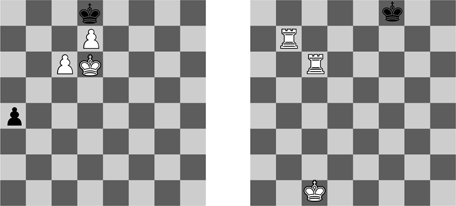
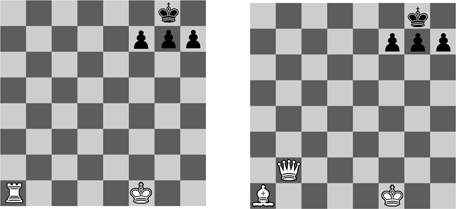
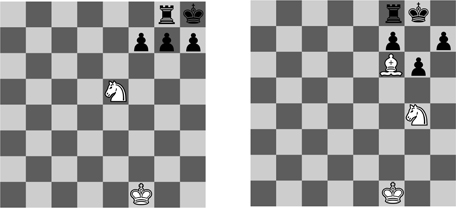
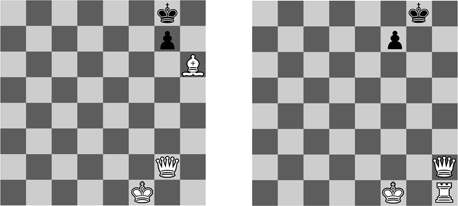
Click here to download this exercise.
Click here for answers.